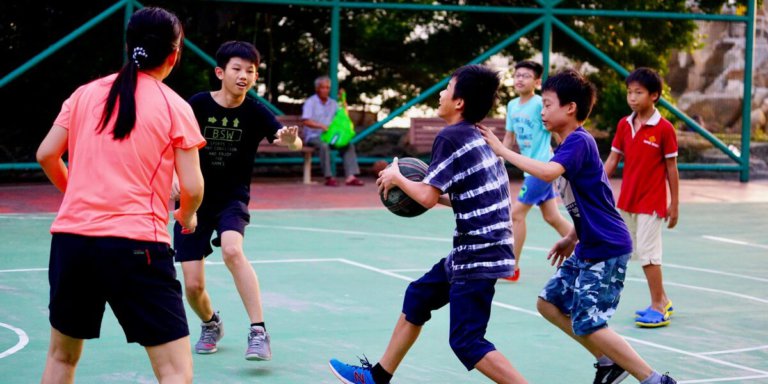
A recent study in Perth has shown that the majority of Gen Z kids are displaying a lack of physical and motor skills compared to previous generations.
These basic physical skills include balance, running, jumping, throwing and catching. The study compared differences between kids of today, and their counterparts years ago.
According to The West Australian, “The University of WA, which carried out the study, said the ‘worrying’ findings demonstrated the need for a national physical activity policy for childcare centres, many of which were falling short.”
In the biggest program of its kind in Perth, UWA measured the skills of children aged three to eight from 41 schools and 11 childcare centres over the past five years.
“In 1994, when The Lion King was the top-grossing movie and kids were playing with Super Nintendos, View-Masters and Power Rangers, they were able to bounce and catch a ball 14 times in 20 seconds. Today, children can only achieve eight catches in the same time frame.”
It was also found that kindergarten children can stand on one leg for an average of 15.4 seconds, compared with 22 seconds in 1994.
There was an era which has unfortunately ended in the late 90s’, In that time kids were more fond of playing rather than using smartphones. All parents should bring back that habit once again for the mental and physical well being of their kids. #Play #Health #Growth pic.twitter.com/osZdLx5ItF
— Little Laureates (@LLaureates) September 22, 2018
After the findings, the UWA team developed an eight-week programme named KIDDO which has apparently significantly improved kids’ physical skills in schools and centres where it was implemented.
KIDDO program director Amanda Derbyshire, from UWA’s school of human sciences, said that lifestyle habits are a large contributor to poor physical skills.
She said, “It comes down to play moving from outdoor and active to indoor and sedentary. If you look at the amount of time we spend indoors, it’s scary, it’s really worrying because (a lack of) physical activity has links to being overweight and obese and the cost is huge.”
The problem is not just confined to Australia, as similar studies conducted around the world show low levels of physical literacy.
In Canada, a study done last year by the researchers at the Children’s Hospital of Eastern Ontario, examined more than 10,000 children aged 8-12 across Canada over three years, to discover that only one-third of them had a basic level of “physical literacy”.
According to the Global News, “That means that most kids lack skills like throwing a ball and perform below expectations in aerobic tests, don’t get enough physical activity and what’s more — they don’t want to.”
Screen time is another factor, as kids today are ‘digital natives’, born into a world of smartphones and electronic gadgets.
Melanie Davis, CEO of Physical & Health Education Canada, told the Global News, “There’s no doubt about that. And there’s a lot of positives that come from being so literate in that area. But what parents, educators and communities need to ensure is that it doesn’t come at a cost to their physical literacy or their physical health.”
But since kids spend a big chunk of their time at school, it’s a good opportunity for educators to incorporate more outdoor play and exercise in the daily schedule.
Leigh Vanderloo of ParticipACTION said that outdoor, unstructured play used to be “huge” but today, kids mainly spend time outside playing organised sports, which is just not the same.
A poll from the National Alliance of Youth Sports found that 70 percent of U.S. kids stop playing organized sports by the age of 13, citing “not having fun anymore” as the most common reason. https://t.co/W1Xf1Bflff
— Stack Sports (@StackSports) June 18, 2019
“They’re losing these opportunities to just engage in active play where they can develop some of these imaginative skills, where they learn a lot of social skills. Also their risk-taking and knowing their own personal limitations and challenging themselves, they’re not getting those same exposures.”
“It’s probably not surprising if you were a parent saying, ‘Go play outside,’ that they would be like, ‘What do we do? What are we supposed to do outside?’ Whereas if we look back a couple of decades, it was probably a no-brainer.”
In light of these findings, both parents and schools can play an important role in encouraging kids to be more active and engage in more outdoor activities.
Programmes like KIDDO, which was designed to help develop ‘physical literacy’ in children aged 3 to 8 and provides information, practical resources and skills for parents, teachers and early learning educators, has shown positive results.
According to the website, “The challenge now is for children to not only develop these skills, but to positively want to be physically active – and to understand why regular physical activity is so important to their future lives.”
So many different ways to develop early confidence in physical literacy through fundamental play based activities pic.twitter.com/dPM1q3yIKi
— Physical Literacy in the classroom (@maggietrainorPL) June 18, 2019
In the UK, where physical literacy has also dropped in recent years, Sport England has urged schools to provide additional training for primary schoolteachers in physical education.
The idea is that by upskilling sports coaches and PE teachers, it builds and promotes a lasting culture that makes physical literacy just as much a priority as subjects like Mathematics and Science.
Liked this? Then you’ll love…
How kids benefit from entrepreneurship skills
In this Digital Age, physical education is more crucial than ever for your kids







